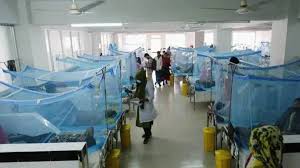Russian scientists have reportedly discovered world’s first H5N8 bird flu case transmission from birds to humans.
As per details, Anna Popova – head of Rospotrebnadzor, a Russian health watchdog, has apprised that scientists from Vektor laboratory have successfully isolated genetic material from seven poultry workers in southern Russia who have been effected by H5N8 strain of avian flu.
This is the first incident of H5N8 strain of avian flu being transferred from birds to humans.
The effected poultry workers have not suffered from any serious adverse effects on their health, she added.
World Health Organization (WHO) has duly been warned as the contagious strain H5N8 which is in fact fatal to birds and has never been transmitted to humans before.
Furthermore, Anna Popova accentuated the fact that so far this virus has not mutated to be able to transmit from human to human which provides the opportunity to ensure essential preparations and preventive measures to address this emerging threat.
What is Avian Influenza/ Avian Flu/ Bird Flu?
Avian influenza, known informally as avian flu or bird flu, is a variety of influenza caused by viruses adapted to birds. The type with the greatest risk is highly pathogenic avian influenza (HPAI). Bird flu is similar to swine flu, dog flu, horse flu and human flu as an illness caused by strains of influenza viruses that have adapted to a specific host.
Out of the three types of influenza viruses (A, B, and C), influenza A virus is a zoonotic infection with a natural reservoir almost entirely in birds. Avian influenza, for most purposes, refers to the influenza A virus.
Avian influenza is most often spread by contact between infected and healthy birds, though can also be spread indirectly through contaminated equipment. The virus is found in secretions from the nostrils, mouth, and eyes of infected birds as well as their droppings.
HPAI infection is spread to people often through direct contact with infected poultry, such as during slaughter or plucking. Though the virus can spread through airborne secretions, the disease itself is not an airborne disease.
People who do not regularly come into contact with birds are not at high risk for contracting avian influenza. Those at high risk include poultry farm workers, animal control workers, wildlife biologists, and ornithologists who handle live birds.
With proper infection control and use of personal protective equipment (PPE), the chance for infection is low. Protecting the eyes, nose, mouth, and hands is important for prevention because these are the most common ways for the virus to enter the body. Appropriate personal protective equipment includes aprons.
























































